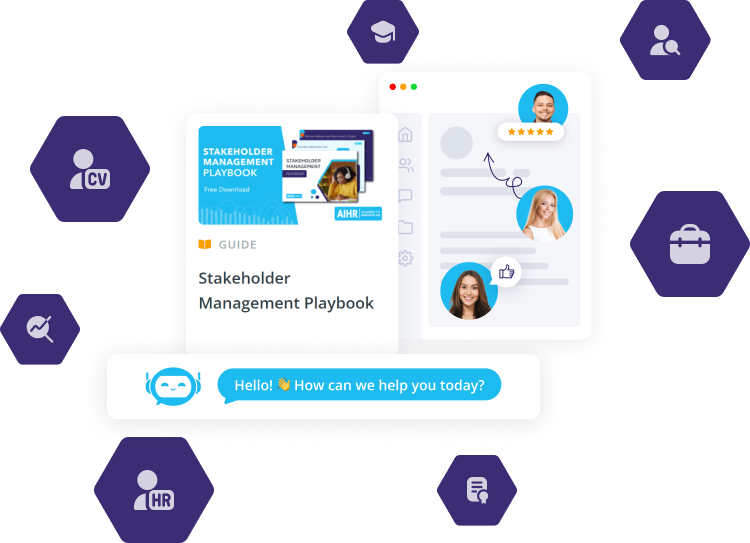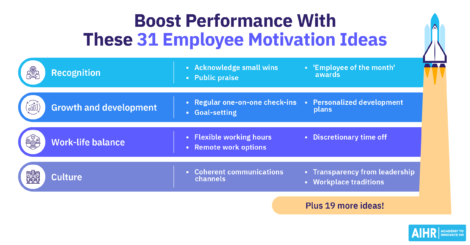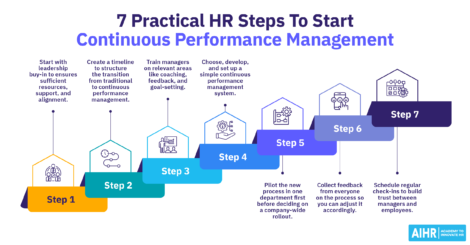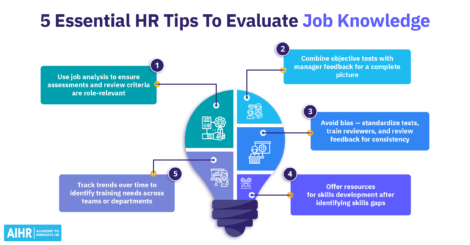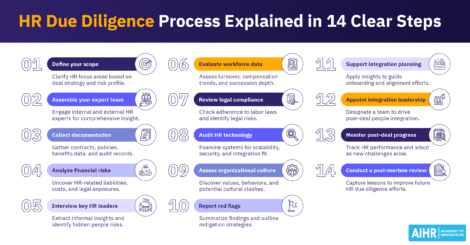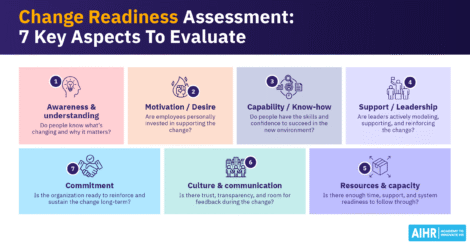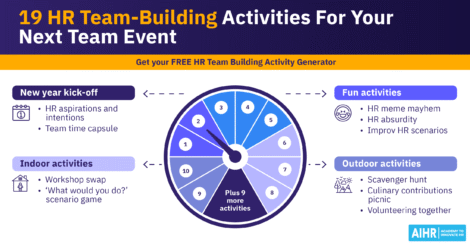How To Develop a Talent Management Framework for Your Organization
$9 trillion. That’s the estimated amount spent by U.S. companies to replace employees who quit in just one year. With more jobs than workers to fill them, an effective talent management framework can help businesses attract and retain top talent, engage employees, and improve performance.

A talent management framework that supports HR strategies and wider business objectives is essential for organizations that want to nurture their workforce and gain a competitive edge. Putting people first and investing in developing talent not only improves your company culture and employer brand, but enables you to build a strong talent pipeline and drive organizational performance.
Let’s explore what a talent management framework is, why you need one, and how to develop and implement an effective framework in your organization.
Contents
What is a talent management framework?
Why does your organization need a talent management framework?
Elements of your talent management framework
7 steps to develop a talent management framework
What is a talent management framework?
A strategic talent management framework is an approach that details the processes and systems organizations use to attract, train, engage, and retain top talent. It helps you make sure you have everything in place to successfully execute your talent management strategy and boost your workforce’s performance.
HR professionals use a talent management framework to guide them through and optimize the entire talent life cycle, from recruitment efforts and performance management to succession planning. An effective talent management framework aligns HR practices with long-term business goals to ensure each person’s role helps drive organizational performance.
Why does your organization need a talent management framework?
A formal talent management framework can lead to many positive outcomes in your organization. Here are some of the primary benefits:
Top talent attraction and retention
A talent management strategy framework helps define how your organization attracts, develops, and retains employees so it supports business objectives. It shapes your employer brand and employee value proposition (EVP) and aligns your recruitment efforts to attract people who are a good fit for your culture and goals. When used effectively, it gives talent teams the structure to hire more intentionally and helps reduce turnover by reinforcing consistent practices to engage and retain top performers.
LinkedIn’s Workplace Learning report states that 88% of organizations are concerned about employee retention. Meanwhile, the Work Institute Retention Report found that over a quarter of U.S. workers voluntarily leave their jobs each year, with the quit rate climbing by 37% over the past decade. These findings confirm that retention is a key area for improvement.
Improved employee and organizational performance
When employees are equipped with the skills, tools, and training they need to do their jobs and grow in the company, their performance can vastly improve, which drives the overall performance of the business.
Better employee engagement
A strong talent management framework connects the dots between business goals and the day-to-day employee experience. It guides how you develop people, recognize their contributions, and support their growth, which are key drivers of engagement. When employees see their work matters, there’s a path forward for them, and their manager is equipped to support them, they’re far more likely to stay motivated and committed.
Stronger talent development strategies
You can’t effectively develop your talent if you don’t have a clear goal for where you want to be. A talent management framework points you to what you need to achieve your goals, and the skills and competencies employees currently lack. With this knowledge, you can strengthen your plan and focus on combining business needs with employee development goals.
Improved succession planning
A talent management framework helps businesses identify high-potential employees and assess and develop them for critical future leadership roles. Improving your succession planning helps you develop confident leaders who can effectively lead and manage people, and gives those high performers a clear career path in your business so you don’t lose them to competitors.
Talent strategy alignment with organizational goals
A clear talent management framework helps translate business goals into practical talent decisions. It brings structure to how you hire, promote, and develop people, making sure these efforts support the organization’s direction. For example, if a company is shifting toward a subscription-based business model, the framework can guide decisions to prioritize hiring for customer success roles and developing cross-functional collaboration skills across teams. It also helps leaders focus on future needs, not just what’s worked in the past.
A future-proof workforce
Staying competitive requires organizations to hire and retain people who can evolve alongside their roles. A talent management framework supports this by identifying skills gaps and linking them to learning and development programs. It gives employees clear opportunities to grow and build the capabilities the business will need down the line. According to LinkedIn’s Workplace Learning Report, offering learning opportunities is the top strategy companies use to improve retention — when people see a future with you, they’re more likely to stay.
Diversity and inclusion
A well-designed talent management framework brings structure and transparency to how you attract, assess, and develop people—helping reduce bias and promote fair decision-making. It sets clear criteria for hiring, performance reviews, and promotions so everyone is evaluated consistently. This creates a more level playing field, supports more inclusive talent pipelines, and builds trust in the process across the organization.
Organizations that take a proactive approach to talent management are better equipped to retain high performers, close skill gaps, and future-proof critical roles.
With AIHR’s Talent Management & Succession Planning Certificate Program, you’ll learn how to structure your talent strategy for lasting impact by analyzing and actioning talent data, developing future leaders, and building a strong, sustainable talent pipeline.
Elements of your talent management framework
Sample talent management frameworks can help build your own. However, keep in mind that each must be adjusted to fit your business, your unique needs, and your employees. Let’s explore some different approaches as a starting point for identifying the key elements of a talent management framework.
The Victorian Academy of Teaching and Leadership gives a three-point framework to begin your unique development. These points are:
- Identify high-potential leaders based on performance, potential, and readiness
- Develop the leaders’ specific learning needs in a variety of contexts, including on-the-job
- Support the leaders with feedback and mentoring from a range of people.
This framework has the advantage of being simple enough to apply to any size of business, and customizable enough to work for any industry. However, you do need to add a step 0, which is to identify your business goals.
The Centre for Executive Education proposed a more extended framework with the following elements:
- Talent Acquisition
- Talent Development
- Performance Management
- Succession Planning
- Talent Engagement
- Organizational Results
Again, this needs to fit the framework of the company’s vision, mission, strategy, and values.
Talent management framework example
Looking at the full employee life cycle and the different HR functions within your organization is a great place to start defining the key components of your talent management framework.
You could, for example, focus on the following six elements:
- Talent strategy and planning: This sets the direction by aligning talent priorities with business goals and forecasting future workforce needs.
- Talent acquisition: Attracting and hiring the right people ensures you bring in talent that fits your culture and supports strategic growth.
- Employee performance management: Continuous performance feedback and goal-setting help employees stay aligned with expectations and contribute to organizational success.
- Training and development: Ongoing learning opportunities support skill growth, adaptability, and internal mobility.
- Succession planning & identifying: Preparing future leaders and identifying key talent helps reduce risk and maintain business continuity.
- Total rewards: Competitive and fair compensation, benefits, and recognition help retain top performers and reinforce your employee value proposition.
Once you have your key elements defined, you can break them down further into focus areas, as in the example below.
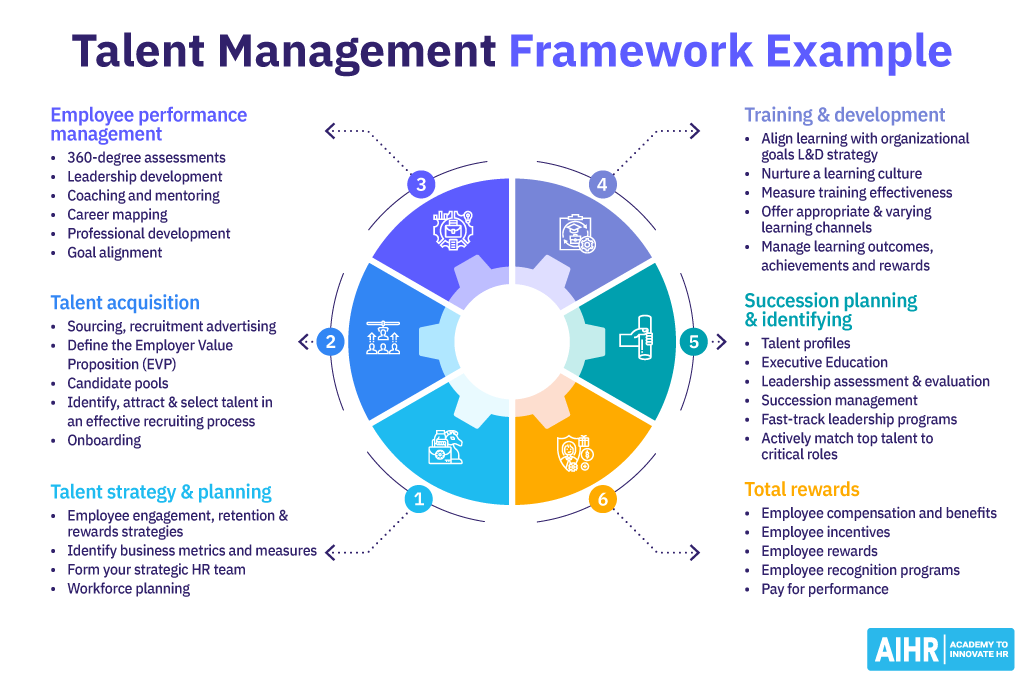
8 steps to develop a talent management framework
Building the right talent management framework gives your organization a clear structure for making consistent, people-related decisions. It helps everyone—from managers to executives—work from the same playbook when it comes to hiring, developing, and retaining talent. Here are some key steps to develop an effective framework:
1. Get leadership buy-in
While talent management may fall under HR’s purview, you cannot build an effective framework without management buy-in. If HR develops the framework on its own, it likely won’t be embraced or integrated by the entire organization. This is why alignment across the organization is crucial.
Involve key stakeholders – leaders, managers and employees – as early as possible to gain buy-in, as well as valuable feedback and useful input.
2. Analyze your organization’s needs and goals
You cannot assess talent needs and gaps without first understanding business needs and gaps. To build a proper framework, you must understand the organization’s long-term objectives, vision, and values. Conduct a formal needs analysis and speak to various people to ensure you fully understand the objectives. Armed with this knowledge, you can ensure your talent management framework aligns with organizational needs and goals.
3. Define your organization’s talent management philosophy
A talent management philosophy gives you a set of guiding principles for managing employee behaviors and performance, recognizing and rewarding performance, being transparent with employees about their performance, and the level of responsibility placed on managers to develop their teams.
Without a talent management philosophy, managers’ preferences and biases often greatly impact employees’ careers and create massive variations in the quality and experience of your workforce. Talent-related decisions must be streamlined across all levels and departments to ensure fairness and consistency.
4. Review your employee life cycle
By reviewing each stage of your employee life cycle, you can identify potential for improvement and what your talent management framework should focus on. For example, how do you approach recruiting? Are your sourcing techniques bringing in candidates to help the business succeed now and in five or 10 years?
When does turnover happen? Do you have a handful of long-term employees, and the rest of the employees leave after two or three years? If so, figure out what is going wrong and why they leave. Are you providing your employees with a clear career path at your organization? Do they have sufficient opportunities for learning & development?
5. Set and track KPIs to measure effectiveness
Once you’ve identified the key elements of your talent management framework, you need to determine how you will measure each element. For example, if talent acquisition is one of your elements, a helpful Key Performance Indicator (KPI) to track would be time to hire, which would enable you to evaluate the efficiency of your hiring process.
Consider how you will measure your KPIs and how these fit into the business’ overall goals.
6. Be employee-centric
No talent management strategy can succeed without the right employees, who need the right support and development to grow. The best talent management frameworks are people-focused and meet the needs of your workforce.
A strategy that requires employees to put in 80-hour work weeks to achieve business success will fail, as it’s not employee-centric. Similarly, employees will not develop the right skills to take on future leadership roles without targeted coaching and training.
Always refer back to your organizational goals and needs to ensure your talent strategy aligns. It’s important not to ignore business needs in favor of keeping employees happy. There are certain times when employees need to part ways with a company and be replaced with people whose personal goals and values align with those of the business.
7. Leverage HR technology solutions
Technology helps turn your talent management framework from an idea into a working system. Tools like Applicant Tracking Systems (ATS), performance management platforms, and learning management systems bring structure, automate routine tasks, and make processes more transparent.
They also make it easier to track the progress on the KPIs you’ve set and adjust your strategy with real data. Emerging AI tools can further streamline this by helping identify trends, surface insights, and personalize experiences at scale.
8. Put your framework into action
The final step is to take your talent management framework and roll it out in your organization. You may want to test it on a smaller scale before rolling it out company-wide, and gain valuable feedback on improvements you can make. Train HR professionals and managers to impart the skills and knowledge they need to implement the framework and support their teams.
For example, if your framework includes a shift to continuous performance management, you might provide coaching sessions to help managers move away from annual reviews and have more frequent, productive check-ins. Make sure you provide the right support for employees who struggle with the transformation.
View your talent management framework as a plan that evolves with your business. This means you should continuously monitor and improve it to ensure it’s working for you and your people.
Over to you
A well-designed talent management framework gives your organization a clear path to attract great people, help them grow, and keep them engaged. It connects business goals and employee experience—and HR plays a central role in making that happen. By building a framework that fits your context and following proven practices, you’re doing much more than improving HR processes—you’re setting your people and business up for long-term success.
Learn more
Related articles
Are you ready for the future of HR?
Learn modern and relevant HR skills, online
